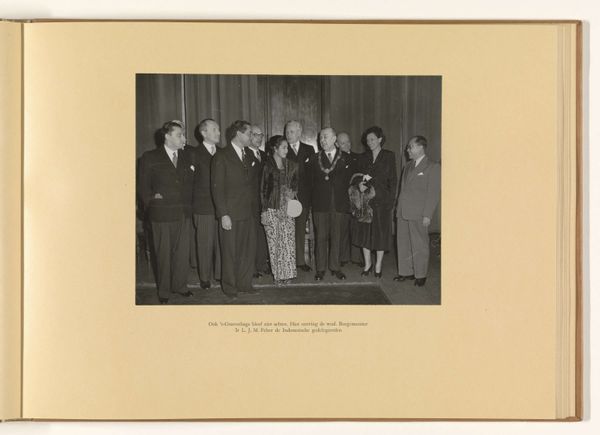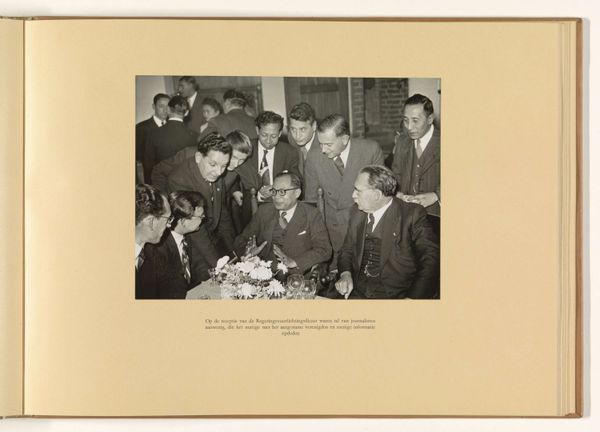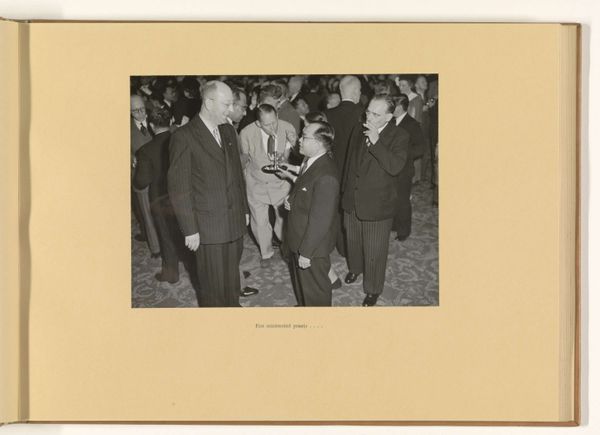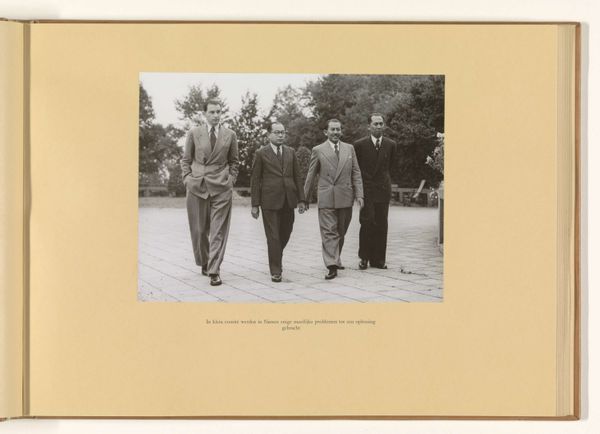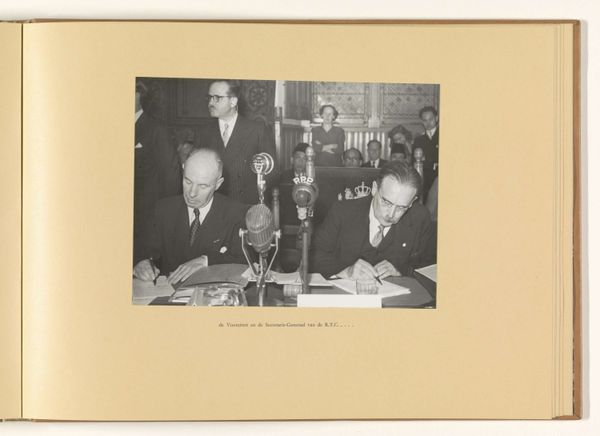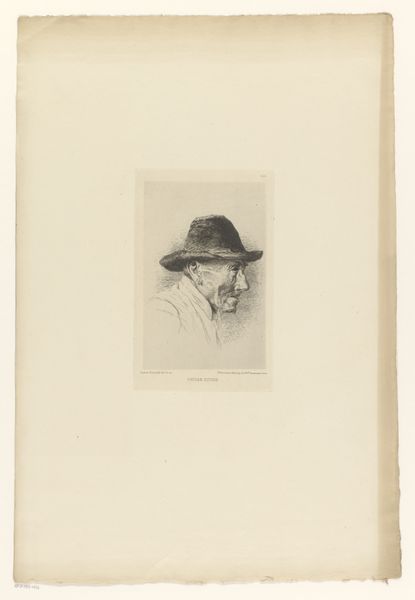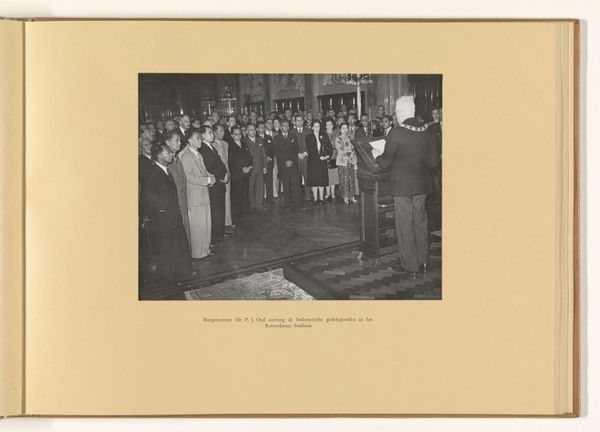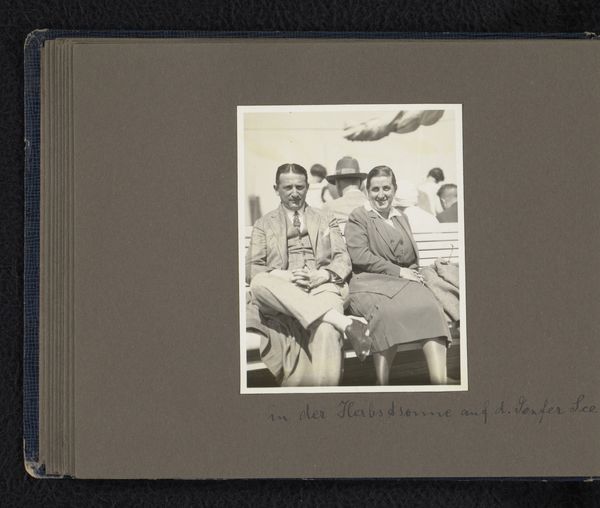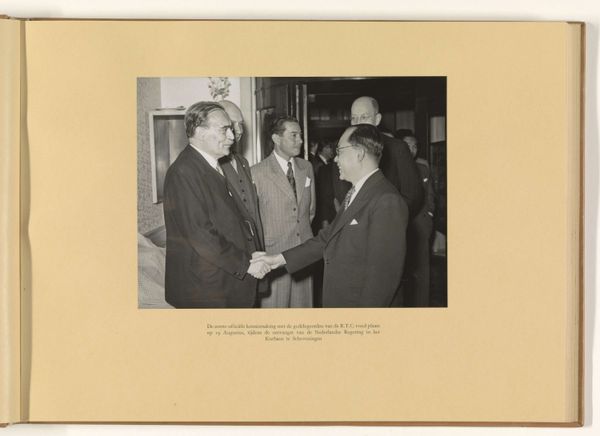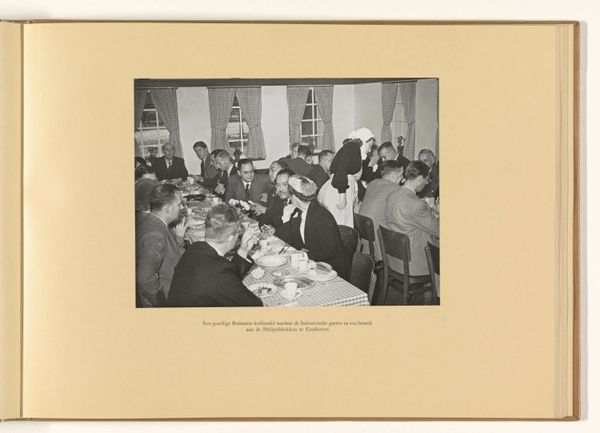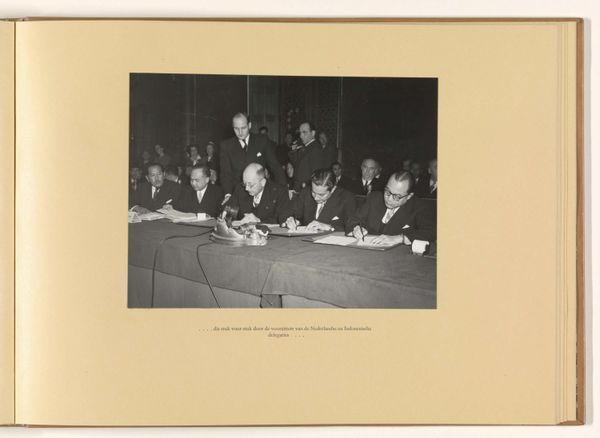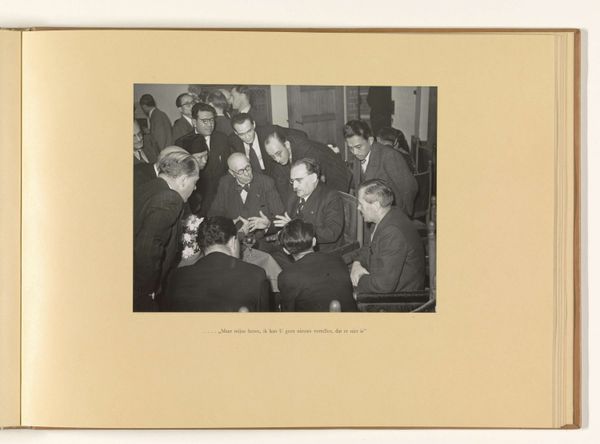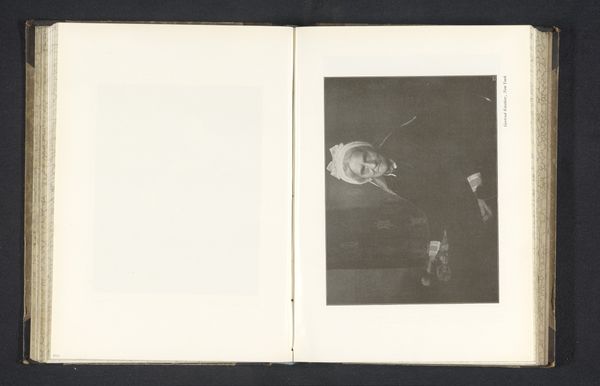
Op de afscheidsreceptie van de Indonesische delegaties Possibly 1949
0:00
0:00
photography, gelatin-silver-print
#
portrait
#
photography
#
group-portraits
#
gelatin-silver-print
#
modernism
Dimensions: height 171 mm, width 233 mm, height 292 mm, width 400 mm
Copyright: Rijks Museum: Open Domain
Curator: Before us is a photograph, "Op de afscheidsreceptie van de Indonesische delegaties", possibly from 1949. It is a gelatin-silver print taken by the Regeringsvoorlichtingsdienst, currently held in the Rijksmuseum collection. My immediate impression is one of contained formality. It's a staged photograph capturing what I perceive to be a moment in time, but also very self-conscious. Editor: Indeed, the composition strikes me too as quite staged, creating a deliberate mood. There’s something fascinatingly stiff and performative about this gathering of people in this picture. The photograph looks to be set at a departure reception for Indonesian delegations. I see it and immediately feel this weight of history of Indonesian independence; that the Netherlands only officially recognized Indonesian independence in December 1949 makes the photo incredibly meaningful. The modernistic style underscores its significance as a historic document capturing a turning point. Curator: Absolutely. Looking through the lens of history, that transition period heavily informs our understanding. It’s striking how group portraiture was deployed in documenting these encounters. I notice the positioning of the figures, the European figures seem centered. It gives the sense of control being exerted or at the very least still perceived and exercised during a time of seismic socio-political transition. Editor: The photographer captures these powerful political figures in a formal gathering with some very precise posing. Note, too, the gelatin-silver print method. The decision to use this lends a sharp contrast. It perhaps signifies the stark realities and tensions underlying diplomatic efforts. Considering contemporary theories surrounding identity, it begs questions about how the act of photographing during these receptions aimed at constructing specific narratives about colonial power relations and resistance to colonialism. Curator: Exactly. The visual power dynamics and representational choices speak volumes, providing valuable socio-historical evidence for researchers today. What this photo reveals, I think, is the very careful construction of historical memory. These photos were never objective representations of reality, rather they actively shape the memory and perception of it. Editor: Precisely. Thinking about race, gender and other kinds of structural inequalities; these formal affairs provided curated stages and are documents attesting to colonial relationships in motion, that even at moments of formal transition still carry symbolic meanings. In looking at it from this perspective, we may reframe how these photographs were instrumentalized, in essence encouraging audiences of these photos to examine the intricate links between politics, power, identity, and the very nature of colonialism in postwar-era. Curator: Yes, it’s this interplay of art and historical record. To analyze it and contextualize the setting in such a tumultuous historical juncture adds so much to our understanding of how history unfolds. Editor: For sure. As such a seemingly benign and formal photograph tells quite a complex story about a specific cultural history, it can spur really significant conversation and inquiry.
Comments
No comments
Be the first to comment and join the conversation on the ultimate creative platform.
